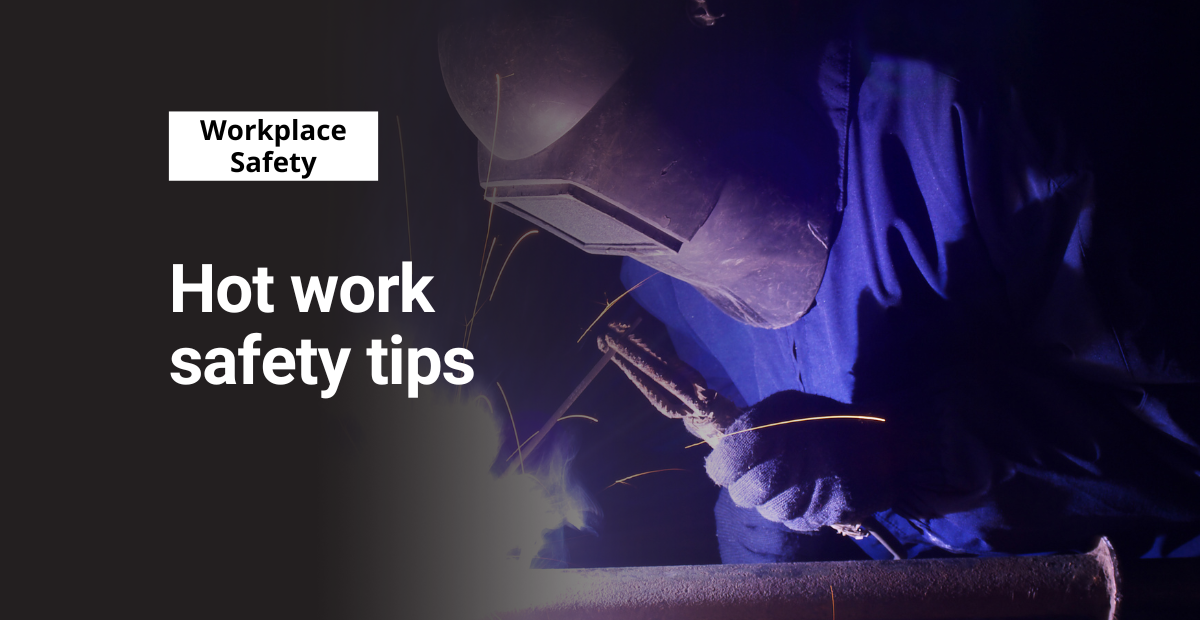There were nearly 5,000 hot work-related structure fires between 2014 and 2018 in the US. Many of these incidents happened because the worker didn’t properly prepare, secure, and audit the workspace first.
Incident prevention is all about building good habits. Instill the right behaviors within your team, and you won’t have to worry about routine variables leading to a major incident. If you follow these hot work safety tips, you can stop fire and electrical hazards from damaging the worksite, stopping production, and injuring workers.
Before starting hot work activities
- Sweep the floor of all debris.
- Invest in heat-resistant clothing and wear it each time you start work.
- Make sure all electrical outlets are closed and secure.
- Put fire-resistant mats on the floor to prevent sparks from catching.
- Don’t forget to check your goggles and/or face shield for cracks.
- Look for holes and tears in work gloves before turning on any tools.
- Check the ventilation in your work area. If it’s sufficient, use a respirator or face mask to protect yourself from combustible gases.
- Clear your work area of all flammable substances and materials.
- Use proper cable management to secure your tools.
- Keep aisles clear of loose tools, cords, and other potential trip hazards.
- Do a hazard assessment of the workspace before configuring it for hot work activities.
- When working on a busy jobsite, block off your workspace from heavy foot traffic (if possible).
- Inspect tools, putting emphasis on the condition of cables and wires. If electrical components are exposed, don’t use the equipment.
- Ensure that you have a fire extinguisher or accessible water source nearby.
- Provide the fire watcher with suppressant tools in case of an emergency.
After completing hot work activities
- At the end of every workday, put all combustibles like fuel gas and oxygen tanks in a designated storage area.
- Calibrate your gas detectors frequently to ensure they’re in working order.
- Assign someone to ensure that all fire hazards are controlled, and heat sources are closed off.
- Store tools in a safe place, making sure to keep them away from hazardous energy sources.
- Double check any ducts that you closed during the hot work process and ensure that they don’t need additional maintenance or repair.
Whether you do hot work activities yourself or manage a team that does, you can benefit from these safety tips. Having regular reminders of proper behaviors will develop a strong safety culture and ensure that the worksite is as safe as possible.




